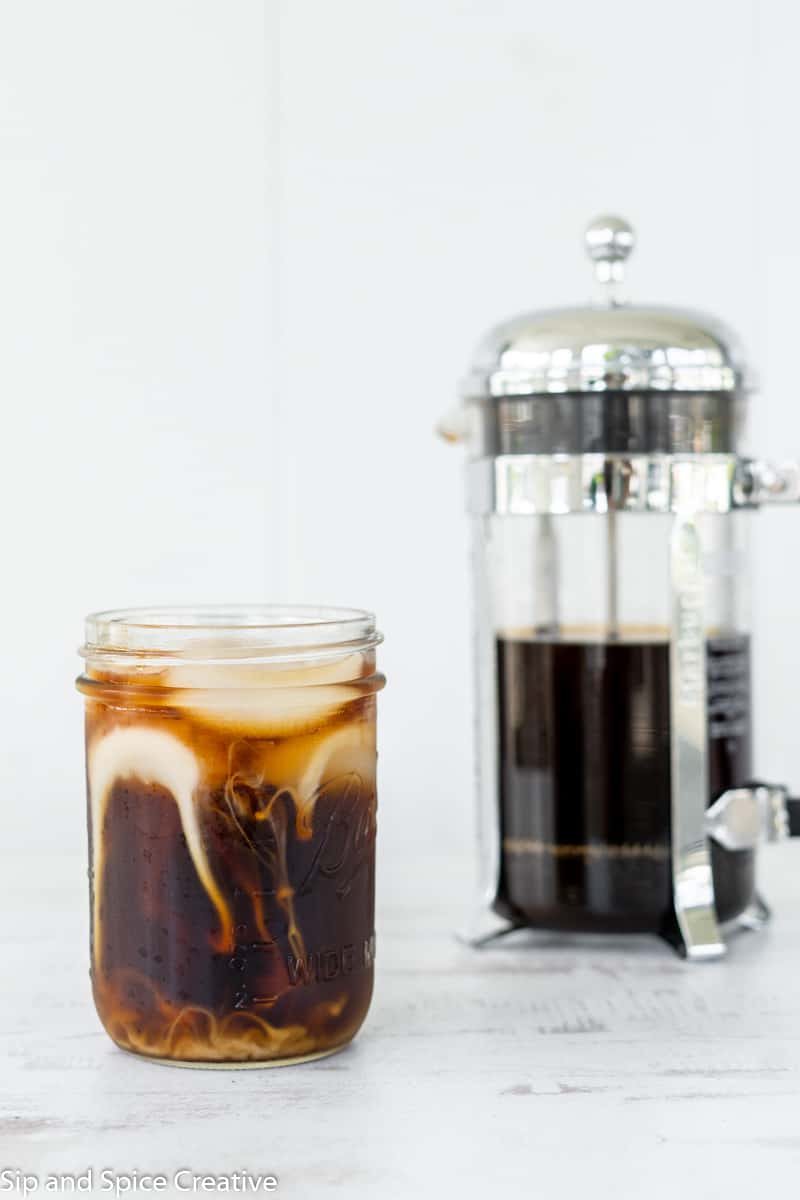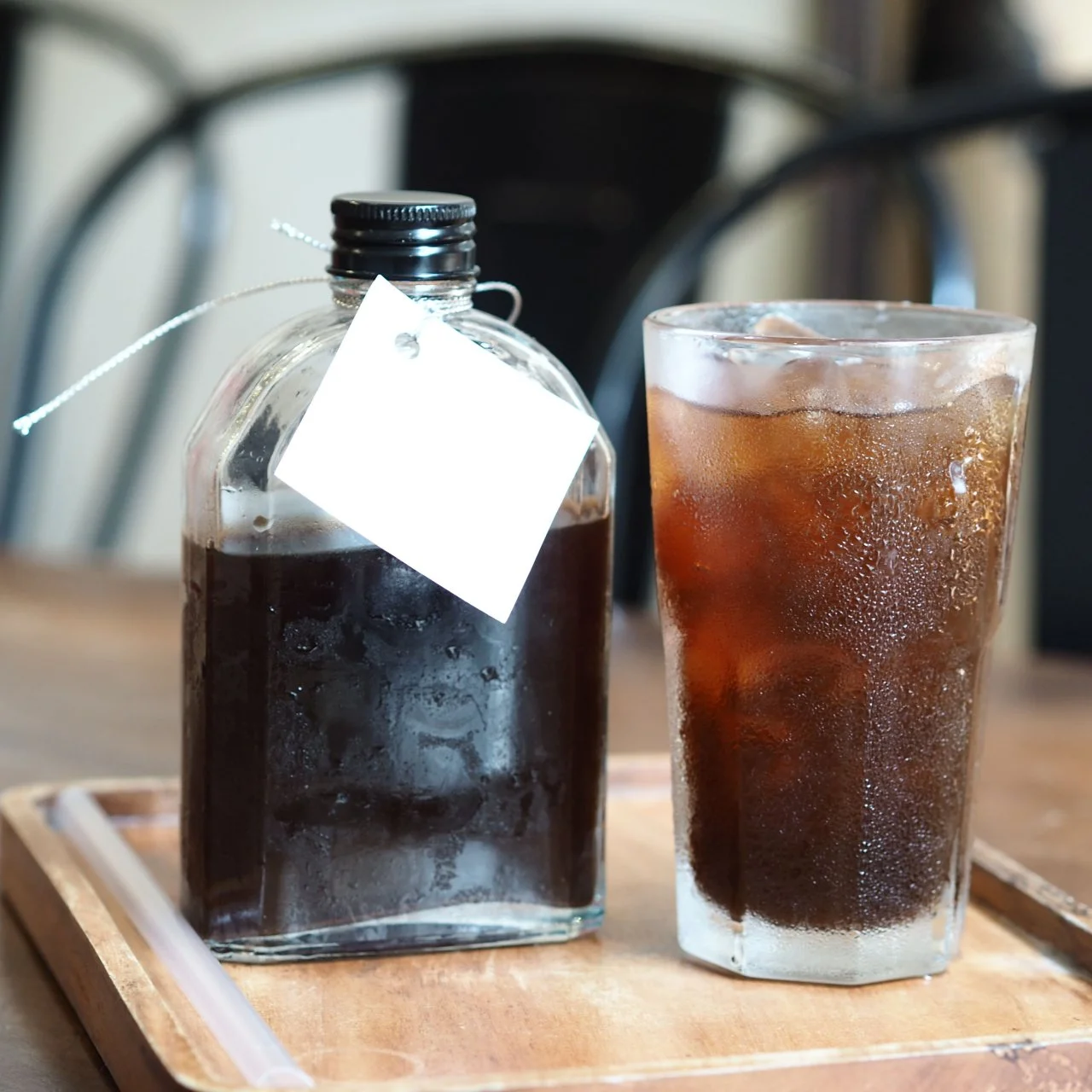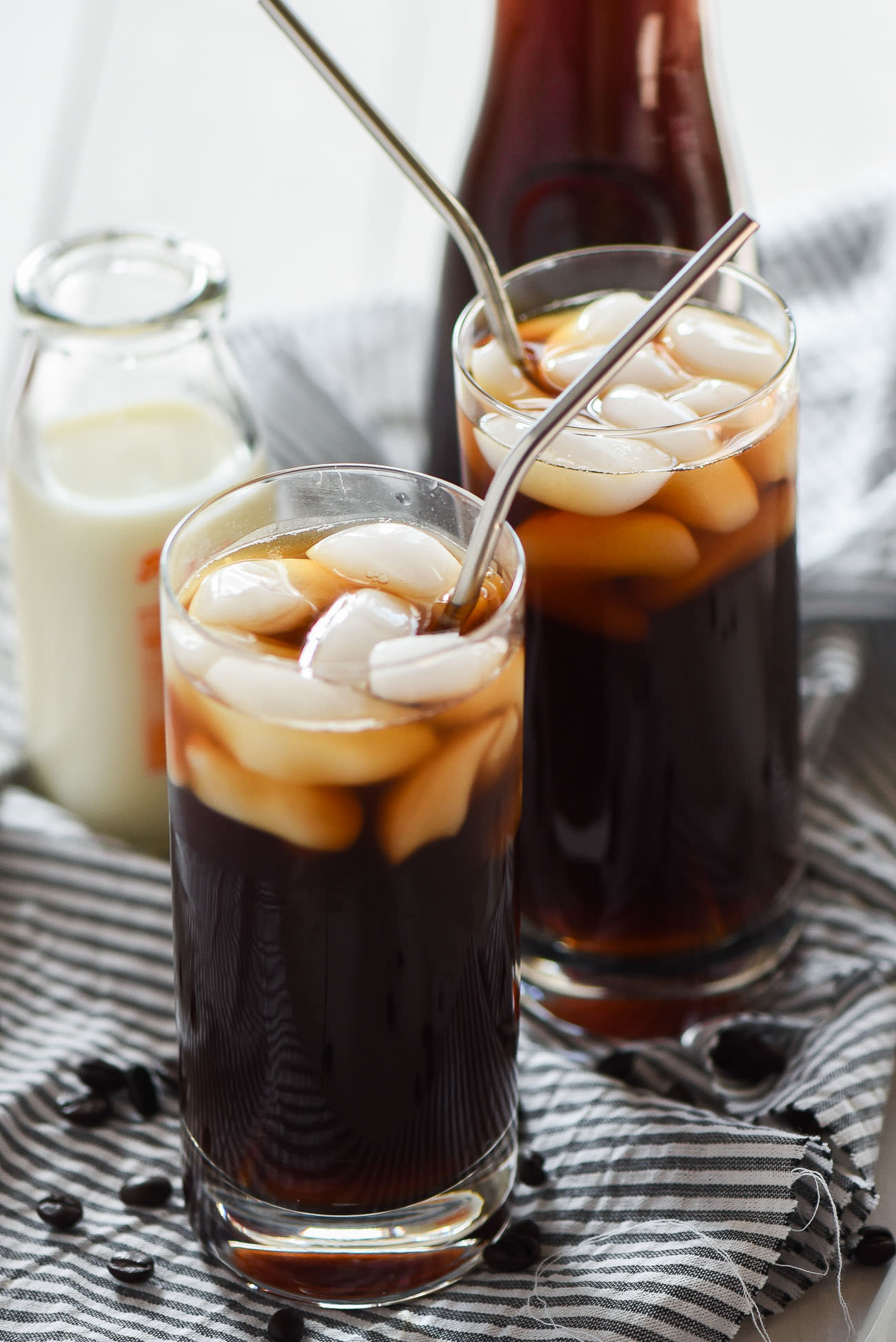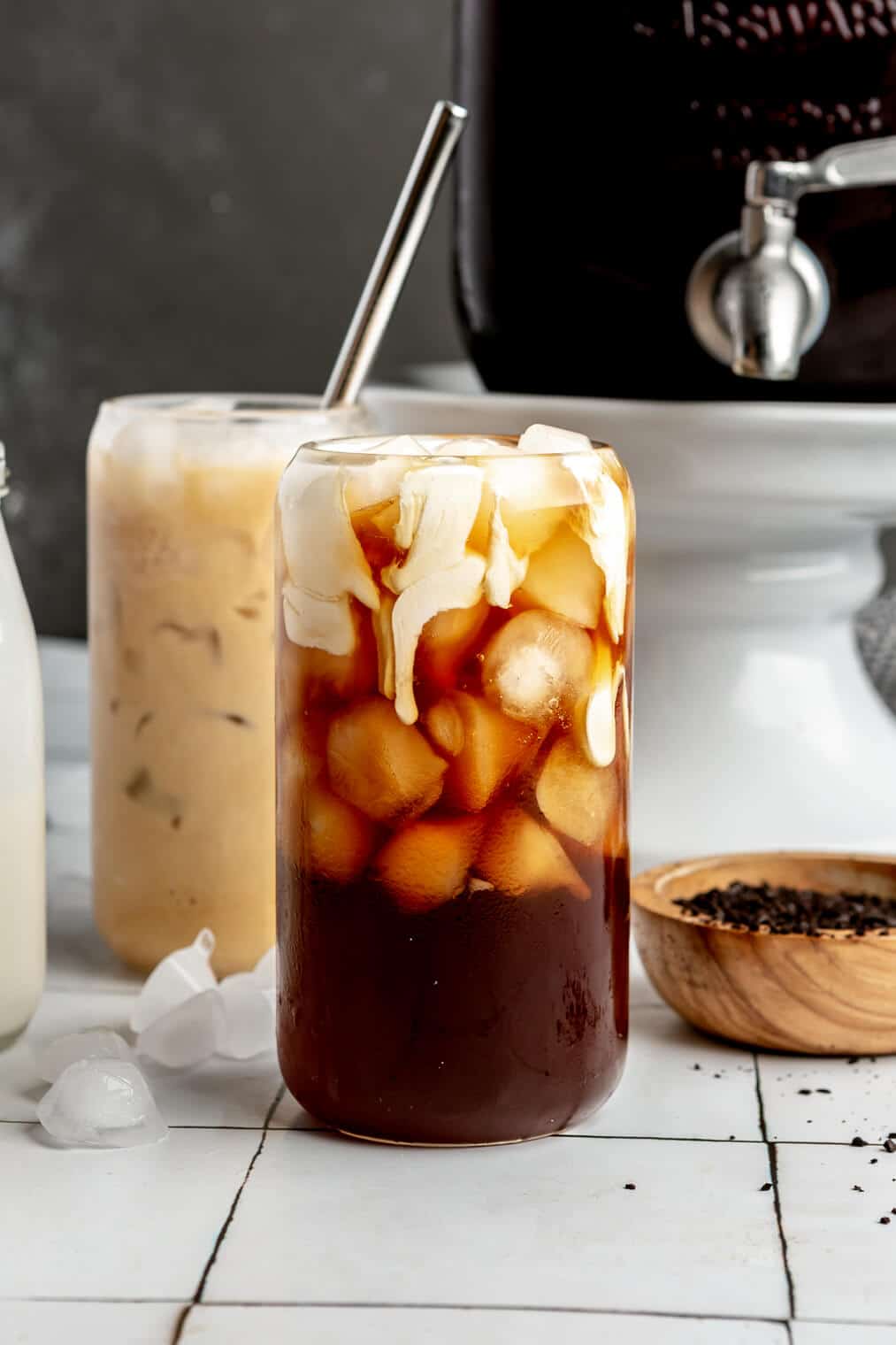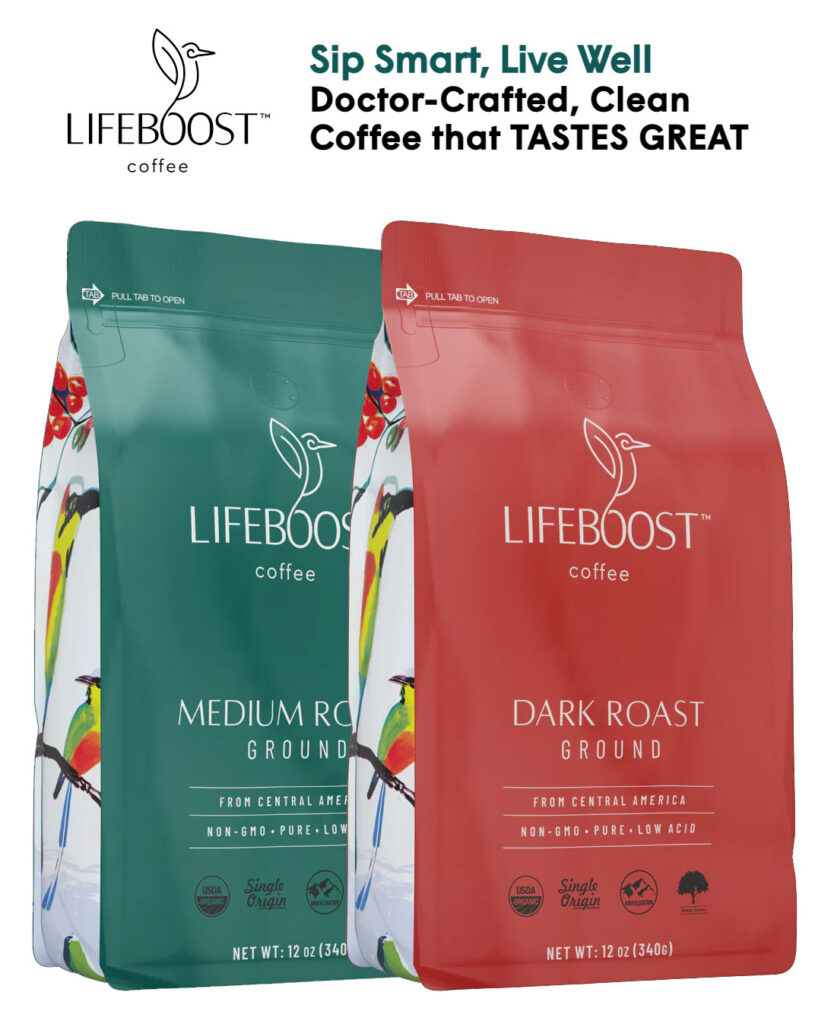Every passionate coffee lover knows the allure of a perfectly brewed cup, but there exists a realm where that pursuit transforms into an art form: making cold brew. As the gentle sun rises, you might find yourself embarking on a journey through rich aromas and the invigorating promise of a refreshing sip. Yet, what most don’t realize is how a simple brewing tool shapes this experience, turning mere coffee grounds into a symphony of flavors. So, let’s delve deeper and uncover the significance of selecting the right instrument for this cold brew revolution.
The Cold Brew Revolution: A Journey Begins
Once upon a time, in the bustling coffee shops of America, a quiet revolution was brewing. Coffee lovers, tired of the burnt taste of traditional hot brews, sought something smoother, fresher, and decidedly chillier. Thus began their journey into making cold brew.
Imagine stepping into a café on a sunlit afternoon, the air heavy with anticipation. Customers eagerly awaited the magical elixir that would transform their summer days. This isn’t just coffee; it’s the promise of refreshment. As they took their first sip, their taste buds danced with joy, discovering a rich, less acidic flavor profile that only cold brew could offer.
This change didn’t happen overnight. The essence of making cold brew started as an experiment, an invitation to play with time and temperature. Home brewers, armed with their passion for coffee, quickly joined the fray, crafting their own chilly concoctions in their kitchens. They filled jars with coarse coffee grounds and water, letting it steep for hours—an act of patience that would yield delicious rewards.
Skip forward to today, and the cold brew phenomenon stretches beyond coffee shops. It captures the hearts of dedicated enthusiasts in homes worldwide. Whether you’re an aficionado or a curious newcomer, the journey of making cold brew simply awaits to invite you in. Grab your favorite beans, and get ready to embark on this refreshing adventure!
Understanding the Role of Brewing Tools
When it comes to making cold brew, the journey begins long before you pour that silky-smooth cup. It’s all about the tools you choose. Picture this: you’re standing in your kitchen, ready to create coffee magic, and the brewing tool you select can mean the difference between mediocre and exceptional cold brew.
Why Brewing Tools Matter
Brewing tools don’t just hold the coffee; they shape the experience. Consider the following:
- Extraction Control: The right tool influences how effectively you extract flavors from the coffee grounds. For instance, a dedicated cold brew maker often allows for optimal steeping and filtration, ensuring you capture that rich essence.
- Convenience: Some tools minimize mess and simplify the brewing process. Imagine the satisfaction of minimal cleanup after a refreshing batch of cold brew.
- Versatility: Certain tools provide flexibility, letting you experiment with different coffee-to-water ratios, allowing you a customized brew tailored to your taste buds.
Brewing Tools Comparisons
| Tool Type | Strengths | Considerations |
|---|---|---|
| French Press | Rich flavor, simple design | Requires careful filtration |
| Cold Brew Maker | Easy brewing, less mess | Often a higher upfront cost |
| Mason Jar | Great for small batches | Potentially less precise |
In essence, understanding the role of brewing tools elevates your cold brew experience. With the right equipment, you not only enjoy the process of making cold brew; you also unlock a world of flavors waiting to be savored. So, before you begin your brewing adventure, take a moment to choose your tools wisely!
A Deep Dive into the Cold Brew Process
Embarking on the journey of making cold brew reveals a fascinating world beneath its surface. Most people think it starts and ends with soaking coffee grounds in water, but the truth is, it’s a culinary adventure rich in flavors and aromas. It begins with two key ingredients: coarsely ground coffee and cold water.
The Cold Brew Method
- Steeping Time: Unlike traditional brewing, which might take mere minutes, making cold brew requires patience. Typically, a steeping time of 12 to 24 hours transforms the coffee. The longer you wait, the richer the flavor becomes.
- Coffee-to-Water Ratio: For a robust cold brew, a common ratio is 1:4 (one part coffee to four parts water). However, feel free to adjust based on your personal taste.
- Filtration: After steeping, you must filter the mixture. This step ensures you capture the rich, smooth essence of the coffee. You can choose from:
- A fine mesh strainer, which preserves a fuller body.
- A cheesecloth, yielding a clean, crisp finish.
The Physics of Cold Brew
The magic of making cold brew lies in the extraction process. Cold water extracts flavors slowly, resulting in a coffee with less acidity and a naturally sweeter taste. You might even notice a variation in flavor profiles—fruity, nutty, or chocolaty notes can emerge based on the coffee beans selected.
As you delve deeper into each step, understanding the intricacies of the cold brew process will elevate your brewing game. With each batch of cold brew, you unlock new potential, inviting a quest for flavors that are uniquely yours.
Choosing the Right Brewing Tool: The Essentials
Imagine waking up to the rich aroma of freshly brewed coffee wafting through your home. The secret? A fantastic brewing tool that transforms simple coffee beans into an invigorating cold brew. As you embark on your cold brew journey, choosing the right equipment becomes essential to unlocking the delightful flavors hidden within your coffee.
When making cold brew, consider the following brewing tools:
- Cold Brew Makers: Designed specifically for this purpose, these tools often feature a built-in filter, making them user-friendly and efficient. They typically brew larger quantities, perfect for batch prep.
- French Press: This classic tool works wonders in making cold brew. Just remember to adjust your coffee grind to be coarser, and let it steep for 12-24 hours. Your cold brew will boast a full-bodied flavor.
- Mason Jars: Versatile and budget-friendly, these jars allow for easy experimentation. However, manual filtering will require a bit more effort.
- Coffee Filter Bags: If convenience is key, these pre-measured bags can provide a simple method for making cold brew, ideal for those new to the game.
Ultimately, selecting the right brewing tool not only impacts the flavor but also enhances your overall cold brewing experience. Revel in the process, and soon you’ll master making cold brew that rivals your favorite café!
Comparing Methods: French Press vs. Cold Brew Maker
As the sun rises and your coffee cravings beckon, you may find yourself at a crossroads: Should you embrace the classic French press or venture into the modern cold brew maker? Both tools serve a purpose in making cold brew, but they deliver different experiences and flavors.
French Press: A Timeless Classic
- Flavor: The French press offers a richer, fuller body. Its mesh filter allows oils and fine particles through, producing a robust taste.
- Process: Making cold brew with a French press involves steeping coarsely ground coffee and cold water for 12-24 hours.
- Cleanup: However, the cleanup might be a bit of a chore—those grounds can get messy!
Cold Brew Maker: The Efficient Innovator
- Flavor: In contrast, cold brew makers often produce a smoother, less acidic drink, ideal for those who prefer a milder sensation.
- Process: With a cold brew maker, you can typically reduce steeping time and simplify the process. Many models streamline filtration, ensuring minimal mess.
- User-Friendly: Just add coffee, water, and let it work its magic—excellence right at your fingertips!
In essence, whether you opt for the nostalgic charm of a French press or the practicality of a cold brew maker depends on your preferences. Both methods excel in making cold brew, yet they cater to distinct flavor profiles and experiences. So, which adventure will you choose?
The Science Behind the Brew: How Tools Affect Flavor
As you embark on your journey of making cold brew, understanding the science behind your brewing tool is crucial. Each tool—whether a simple jar or an elaborate cold brew maker—has its unique impact on the flavor profile of your final brew.
When it comes to making cold brew, the extraction method plays a vital role:
- Surface Area: Different tools can alter how much coffee enters the water. A French press, for instance, allows more grounds to be in contact with water, resulting in a bolder flavor.
- Soaking Time: Tools vary in how well they retain water. A leak-proof cold brew maker can maintain a stable environment, producing a more consistent and less acidic brew compared to a jar that may evaporate some liquid.
- Filtration: Effective filtering tools can impact clarity and mouthfeel. A fine mesh might yield a smoother finish, while coarse strains could leave a thicker texture.
| Brewing Tool | Extraction Efficiency | Flavor Profile | Ease of Use |
|---|---|---|---|
| French Press | High | Bold, Rich | Moderate |
| Cold Brew Maker | Moderate to High | Smooth, Crisp | Easy |
| Jar Method | Moderate | Good, Variable | Simple |
Ultimately, the tool you choose shapes not only the convenience of making cold brew but also the very essence of the flavor you will savor. Experiment with different brewing tools to discover how they elevate your cold brew experience!
The Art of Grinding Coffee: A Crucial Step
As you embark on the adventure of making cold brew, you may not realize that one of the most significant factors in achieving a perfect cup lies in the grinding of your coffee beans. Imagine standing in your kitchen, the aroma of freshly ground goodness wafting through the air, setting the stage for the delicious cold brew experience ahead.
Here’s why the grind matters:
- Size Matters: The grind size directly influences the extraction process. For cold brew, a coarse grind works best. It allows the water to flow through the grounds without over-extraction, which can lead to bitterness. Conversely, a fine grind can result in a harsh brew and leave undesirable sediment floating in your cup.
- Consistency is Key: Achieving a uniform grind ensures even extraction. Irregular bits can lead to uneven flavors, with some parts overly bitter and others weak. Invest in a good burr grinder for consistent results.
- Freshness Rules: Freshly ground coffee retains essential oils that add depth and richness to your cold brew. When making cold brew, the fresher the ground coffee, the more vibrant your flavors.
In short, making cold brew isn’t just about choosing the right brewing tool—opt for an excellent grinder, and you’ll discover the harmonious balance between flavor and strength, elevating your cold brew to unforeseen heights. Enjoy the journey of this art, for every grind propels you closer to perfection.
Common Mistakes When Brewing Cold Brew
Embarking on your journey of making cold brew can be thrilling, yet many enthusiasts stumble along the way. With each misstep, a chance to unlock the full potential of your brew slips through your fingers. Let’s highlight some common pitfalls to ensure your cold brew experience remains delightful.
Here are key mistakes to watch out for:
- Wrong Coffee Grind Size: Using coffee grounds that are too fine might result in a bitter flavor. Aim for a coarse grind, similar to raw sugar. This enhances extraction while keeping it smooth.
- Insufficient Brew Time: Aiming for a quick fix? Don’t skimp on time! Making cold brew generally requires 12 to 24 hours. Rushing this step can lead to underwhelming flavor.
- Ignoring Water Quality: Using tap water with strong tastes can mar the subtle notes of your coffee. Opt for filtered water to elevate your brew.
- Overloading with Coffee: The rule of thumb is to stay at a 1:4 coffee-to-water ratio for your first try. Overconcentrating coffee can lead to overwhelming bitterness.
- Skipping the Straining Process: Failing to strain your brew properly leaves you with murky, gritty coffee. Invest in a good strainer—your taste buds will thank you!
By vigilantly avoiding these common mistakes, you’ll be on the path to mastering the art of making cold brew, unlocking a world of rich flavors waiting to be savored.
Experimenting with Your Brewing Tool: Finding Your Flavor
The world of making cold brew is a canvas waiting for your unique brush strokes. Picture this: you’ve got a shiny new brewing tool in hand, and the scent of freshly-ground coffee dances in the air, whispering inspiration into your creative soul. Now it’s time to explore!
Experimentation is the heart of discovering your perfect cold brew. Feel free to mix and match different variables:
1. Brew Time:
- 12 Hours: A classic brew, mild and smooth.
- 18 Hours: Rich and bold, perfect for serious coffee lovers.
- 24 Hours: A concentrated elixir—dare to try?
2. Coffee-to-Water Ratio:
- 1:4: Strong and robust; ideal for a caffeine kick.
- 1:5: Balanced and flavorful; a popular choice.
- 1:6: Light and refreshing; perfect for warm afternoons.
3. Water Temperature:
- Cold Water: Promotes sweetness and delicate flavors.
- Room Temperature Water: Enhances boldness and depth.
By tweaking these elements, you change the symphony of flavors the cold brew orchestra plays in your mouth. Keep notes on your experiments; soon enough, you’ll discover the harmony that sings to your palate.
The thrill of making cold brew isn’t just about following the steps—it’s about the journey of flavors you embark on with every new brewing tool you explore. So, unleash your creativity, and enjoy the delightful ride!
Stories from Cold Brew Enthusiasts
In the world of coffee, few experiences can compare to the stories spun by cold brew enthusiasts. Imagine a vibrant café, buzzing with excitement, where patrons gather, their cups filled with that rich, smooth elixir—each sip telling its own tale.
Take Sarah, a self-proclaimed cold brew aficionado. Her journey into making cold brew began when she craved a refreshing drink during one hot summer afternoon. Armed with nothing but a mason jar and a bag of coarsely ground beans, she experimented and stumbled upon the perfect steeping time. Now, she hosts weekend gatherings, showcasing various brewing tools and encouraging friends to discover their unique brewing methods.
Then there’s Mark, who turned his passion into a business. After months of making cold brew in his own kitchen, he aimed to catch the attention of local coffee shops. He developed a signature blend, achieved through meticulous attention to the brewing process. His brewing tool? A handcrafted cold brew tower, which has become the centerpiece of his small-batch coffee brand.
Moreover, countless enthusiasts frequent social media platforms to share their mishaps and successes. They swap secrets, reveal favorite brewing tools, and offer spoiler alerts about their seasonal flavors.
Whether you’re a newbie or an experienced brewer, immersing yourself in the stories and experiences of fellow cold brew lovers can inspire your making cold brew journey and experiment with your brewing tools to elevate your taste.
The Future of Cold Brew: Innovations in Brewing Tools
As the popularity of cold brew continues to soar, innovative thinkers are stepping up, eager to elevate the cold brew experience. Imagine sipping a perfectly balanced cold brew, crafted effortlessly with cutting-edge tools.
The world of making cold brew has witnessed remarkable advancements that transform ordinary coffee into extraordinary moments. Here’s a glimpse into future innovations that promise to enhance the brewing process:
- Smart Brewing Devices: Smart coffee makers integrated with apps allow you to control the brewing time and strength from your phone. Imagine setting it up in the morning and having a delicious cold brew waiting for you when you return!
- Reusable Brewing Pods: Sustainability meets convenience with reusable pods designed specifically for cold brew. They make making cold brew eco-friendly while simplifying the clean-up process.
- Precision Brewing Systems: Some pioneers are experimenting with sous-vide technology, ensuring consistent temperature control during extraction. The resulting flavor clarity may redefine your coffee palette.
- Portable Cold Brew Makers: For those on-the-go, compact and lightweight makers will allow you to enjoy fresh cold brew wherever you are. Perfect for outings or travel, these tools ensure you never compromise on taste.
As we look to the future, the innovations brewing in the world of making cold brew promise an exciting journey for coffee lovers everywhere. These advancements open doors to creativity and flavor exploration, ultimately transforming every sip into a delightful experience.
Frequently Asked Questions
What brewing tools are essential for making cold brew coffee?
In the vast world of coffee-making, the brewing tools you choose hold the key to a delightful cold brew experience. Essential tools include a quality coarsely ground coffee and a brewing vessel, which can range from a simple mason jar to specialized cold brew coffee makers. The brewing vessel’s material matters; glass and stainless steel are popular choices because they don’t impart flavors that could alter your brew. A fine mesh strainer or coffee filter is crucial for ensuring a clean cup, free of sediment. And, for the adventurous home barista, a scale can help you achieve the perfect coffee-to-water ratio that will make your cold brew shine like a summer day.
How does the quality of the brewing tool affect the taste of cold brew?
Imagine crafting a symphony; the brewing tool is your conductor, guiding each note to create a captivating flavor profile. The quality of your brewing tool can dramatically influence the taste of your cold brew. For instance, using a well-made cold brew maker will allow for optimal extraction of flavors, preventing any off-tasting notes that can arise from subpar materials. Stainless steel tools might maintain the temperature better than plastic, while glass offers no interference with the taste. Each material contributes to the final cup, and investing in high-quality equipment is akin to choosing the finest instrument for your orchestra—it makes all the difference.
Can I use a regular coffee maker for cold brew?
Though the thought of using a familiar coffee maker for making cold brew may seem appealing, this conventional route may not yield the desired results. Regular coffee makers are designed for hot brewing, where both temperature and pressure extract flavors differently than cold brewing. Cold brew relies on time and not heat, and thus a cold brew system—whether a jar steeping method or a dedicated cold brew maker—will yield a smoother, less acidic cup. However, if you’re undeterred, some coffee makers do include a cold brew option; just ensure it allows for prolonged steeping and adequate temperature control to embrace the mellow, flavorful notes distinct to cold brew.
Why is steeping time important in cold brew coffee?
Envision the delicate dance of flavors as coffee grounds mingle with water over time—a process both artful and scientific. Steeping time is the heart of cold brew, typically lasting anywhere from 12 to 24 hours. This extended time allows the coffee’s oils and flavors to release slowly and gracefully, creating that signature smoothness and sweetness unique to cold brew. If steeped for too short a time, your brew may taste weak and lack character. Conversely, over-steeping can lead to an overly bitter cup, much like leaving a tea bag in hot water for too long. Mastering this balance ensures a remarkable cold brew experience.
Are there specific techniques to enhance the cold brewing process?
As you embark on the enchanting journey of cold brewing, a treasure trove of techniques awaits to elevate your experience. Firstly, consider experimenting with the grind size of your coffee; coarsely ground beans are ideal as they allow for optimal extraction while preventing over-extraction. Secondly, the coffee-to-water ratio can significantly influence the strength of your brew; a common ratio is 1:4, but feel free to adjust according to your taste preferences. Water quality is another critical factor—filtered water can remove unwanted flavors that tap water may bring. Lastly, adding a pinch of salt or experimenting with different coffee bean origins or flavors can create a unique signature brew fit for coffee connoisseurs.

